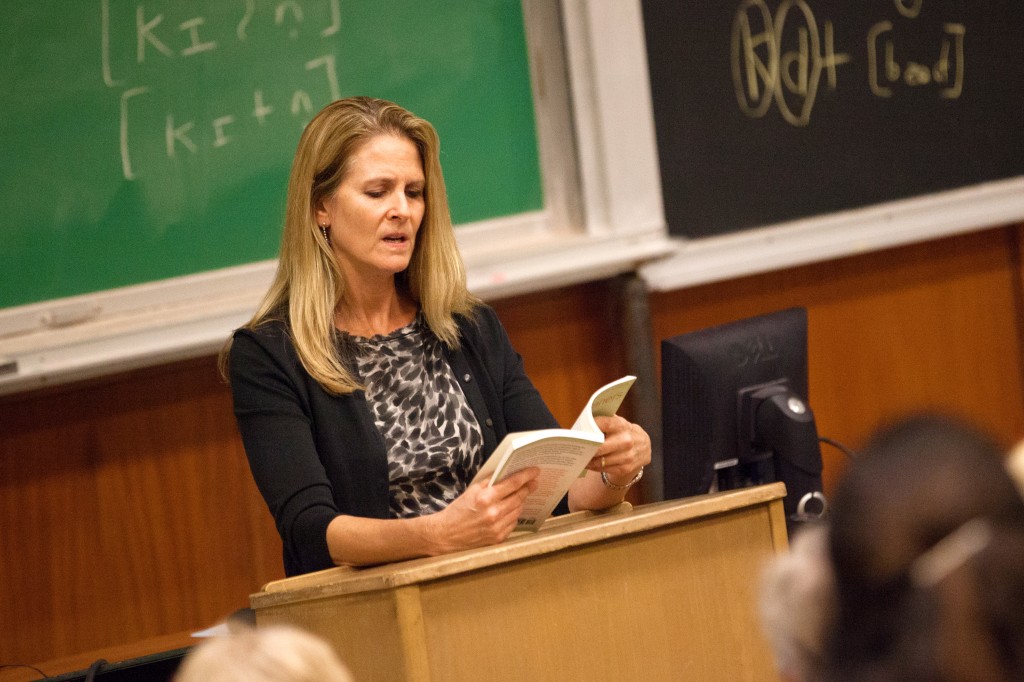
On Tuesday night, prizewinning author Karen Brown brought her audience into a world of suburban secrets and tragedy.
After a short preamble, Brown took to the center of the room and, after an equally short introduction, started reading her story “Stillborn” from her collection “Little Sinners, and Other Stories,” which won Binghamton University’s 2013 John Gardner Fiction Book Award and the Prairie Schooner Book Prize.
Born and raised in Connecticut, Brown now teaches creative writing and literature at the University of South Florida. She was brought to campus by the Binghamton Center for Writers as part of the Spring Readers’ Series. Apart from “Little Sinners,” Brown’s work includes a novel, “The Longings of Wayward Girls,” and another short story book, “Pins & Needles,” winner of the Grace Paley Prize in Short Fiction.
Brown came not to fill the room with Floridian warmth, but to take the attendants to the Long Island Sound waterfront, across neighborhoods of quaint houses, green lawns and people with stories where the quotidian and the sordid hold hands. Her prose is clear and meticulous, descriptive and sensible. Dealing with the idealized bliss of suburban life, “Little Sinners” paints a dark and emotional side of ordinariness in suburban New England.
“Stillborn” captured the attention of the silent listeners, who were guided through images of innocence, slices of life and dark secrets. Diana, six months pregnant, moves with her adulterous husband to a cottage. A ghastly secret is discovered in the garden, “Femur, fibula, humerus, clavicle. Tiny bones, delicate and dirt-stained,” and from two perspectives, the story behind it comes to light. Brown created a small universe of her own, and the attendants were shown the big picture and the grim details for over half an hour.
There’s something unusual and attractive about Brown’s narrative. The tightly-knit suburban universe draws from her memories and experiences.
“I always wanted to be a spinster,” Brown said, in reference to her drive to write about lonely, old women.
The female experience is a recurring theme in her stories, but unlike social realism, there’s the personal element. Her characters confront many kinds of loneliness, from animal to rational, deal with dark secrets and tragedies, but overall, they are human and act as such: the most captivating aspect of her narrative.
Brown closed the night talking about how her literary world draws directly from her own and her method: “It’s all from memory. I used to keep notebooks and journals when I was younger […] I felt like I was wasting a lot of time. Sit down and write.”


